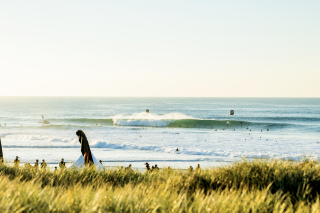ASB MAGAZINE: A short introduction to the economics of surfing featuring UWA research fellow Ana Manero Ruiz on location at Scarborough beach Western Australia. Surfing has approximately 35 million participants worldwide. Surfers travel all around the world and engage with thousands of coastal communities all-year-round. The concept of surf economics – also known as surfonomics – has been used by environmental, surf-related non-governmental organizations (NGO) like Save The Waves Coalition and Surfrider Foundation to evaluate economic benefits derived from surfing.
The analysis takes into consideration the increasing number of harmful coastal developments and pollution events that threaten surf spots. Surf economics has guided the establishment of the World Surfing Reserves (WSR) program. WSR is an advocacy mechanism developed to influence government policies and help decision-makers make better choices to protect key environmental, cultural, economic, and community characteristics of world-class surf spots and their surrounding areas.
Several surf breaks already know the economic impact of surf tourism on the local economy, including Mundaka (Spain), Mavericks (California), Uluwatu (Bali), Pichilemu (Chile), Huanchaco (Peru), San Miguel (Mexico), Guarda do Embaú (Brazil), and Lobitos (Peru).
These studies applied the direct expenditure method of economic evaluation to estimate the market value of surfing for the local economy. The results of these eight studies sum up to $250 million per year. Watch the clip and learn more about the method Surf Economics use to calculate the ‘value’ of riding waves…
Created by Shiya Huang.









